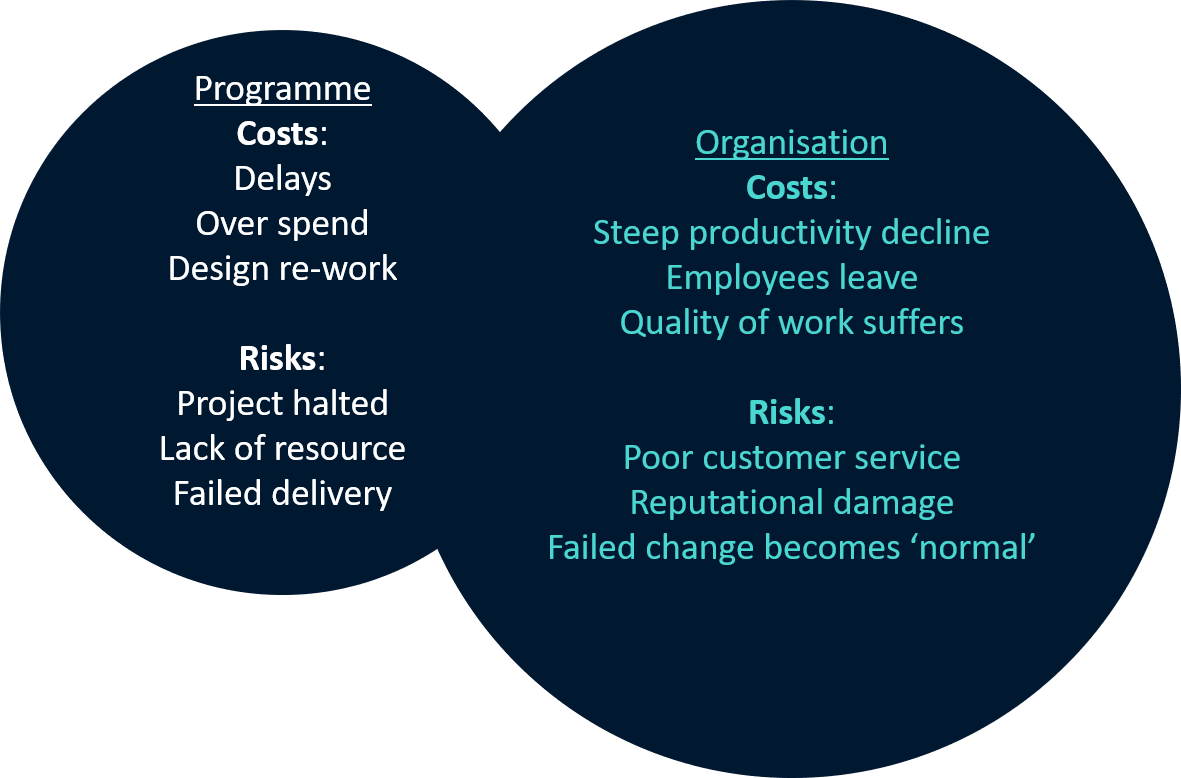Failure to understand the people side of change is akin to failing to learn to break when learning to drive. Sure, you’ll probably get to where you intended to go, but you’ll be battered, bruised and have a trail of angry people behind you.
All of us, at some point, have experienced a poorly delivered change. Either a technical change or an organisational change, either as the culprit or the victim.
We know that of failed projects, 70% fail due to poor change management and we know that where change management has been ineffective or non-existent projects over-run & over-spend and that the product they create is either under-utilised or people are slow to adopt it.
There are 2 ways to think about this – the costs & risks to the programme and the costs & risks to the organisation; and it is the latter that has the most impact.

Its one thing for a project to fail, it looks bad, but at the end of the day its only the investment that’s lost. The elephant of the problem is when that seeps into the organisation and people disengage. Their happiness suffers, leading to a decrease in productivity/quality, which then knocks onto customer outcomes which shoots an arrow in the head of an organisations bottom line.
The other cost to consider, even if the implementation goes smoothly, is not fully realising the intended benefit of the programme. Studies show that with top-notch change management the ROI of a programme was 143%, compared to only 35% with poor/non-existent change management.
It is true that you can deliver projects without change management (I wouldn’t advise it, mind) and sometimes those projects go well (time, budget, quality). However, results always come down to people and if they’re not adequately engaged you’re throwing your ROI down the toilet.





